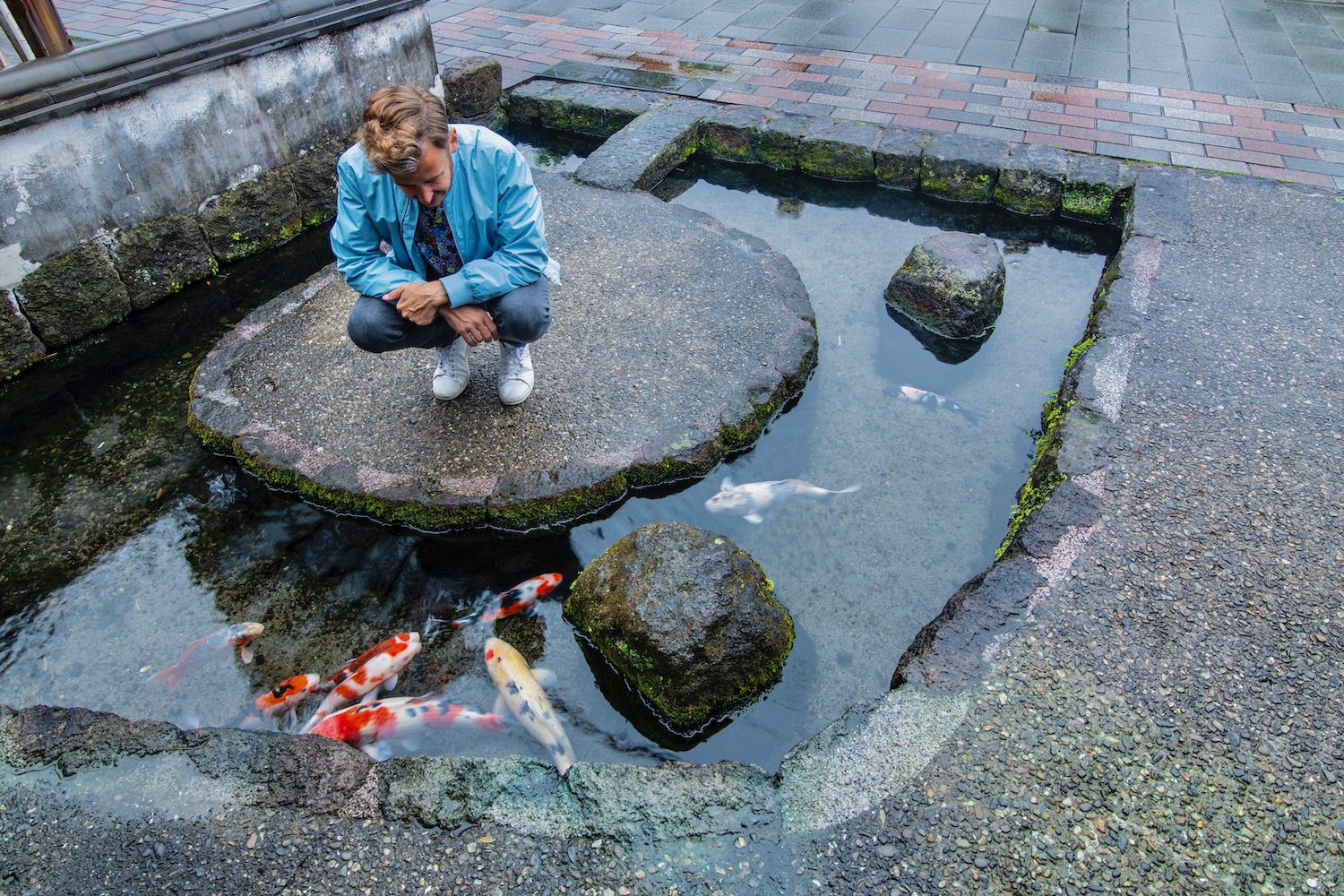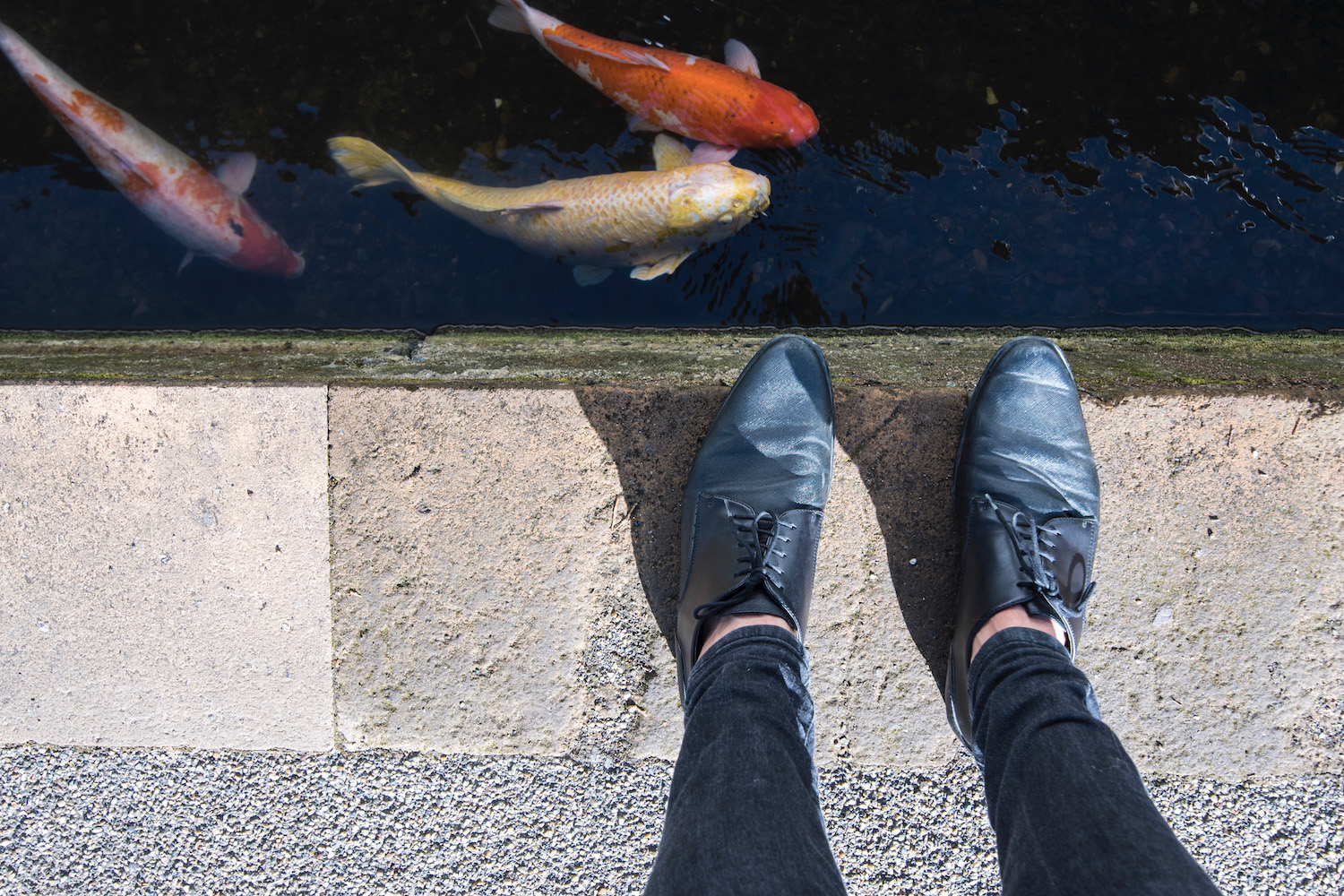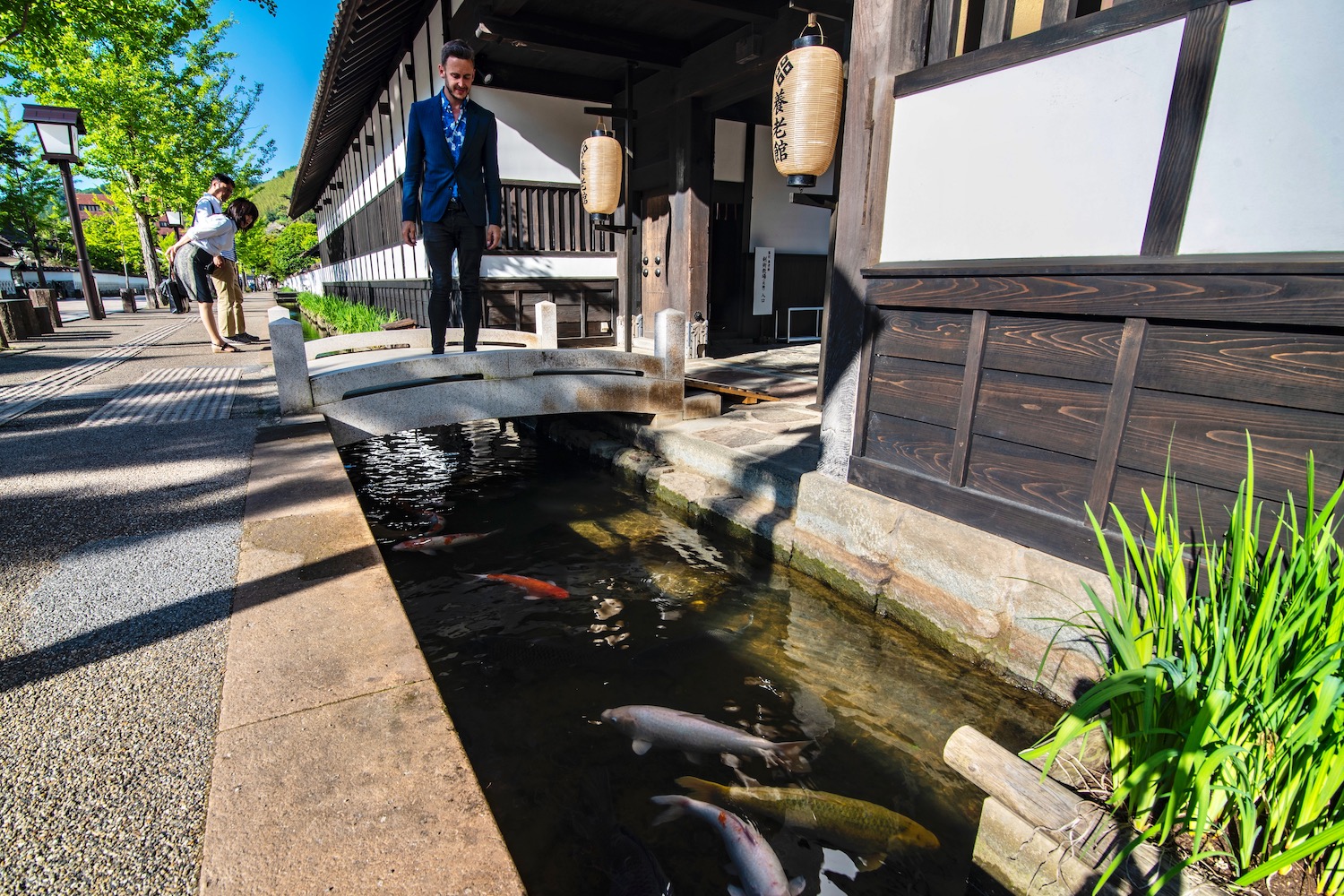Japan is a clean country—this is no secret. How clean Japan is, of course, is up for debate. When chatting with fellow Americans, for example, I often tell them I feel like I could eat off the ground in Japan.
Now, if I were sitting at a yatai in Fukuoka and had been eating clumsily, would I actually pick up a morsel I’d dropped and put it in my mouth? Maybe; maybe not. But I think you get what I’m saying.
I bring this topic up, because every so often, stories about koi in drains—namely, the narrative that “Japan’s sewers are so clean, fish swim through them—come up. And I actually know a thing or two about said fish, for reasons I’ll explain in just a second.
Why I Went to Investigate Japan’s “Goldfish Gutters” for Myself
I became interested in this topic pretty early in the life of this website. It was early 2019 and, having come off a very successful launch year, I wanted to take a trip that would elevate me to the next level. I ended up deciding upon San’in, the northern “slice” of the far-western Chugoku region of Japan, which includes Hiroshima. Needless to say, it achieved everything I wanted and then some.
Among its unique destinations was Tsuwano, which I’d actually seen in viral posts for years, as one of the towns in Japan whose drainage ditches apparently had koi swimming through them. I felt vindicated, upon arriving, to learn that this was true. Of course, if you want to place a bet in Japan, you don’t necessarily have to go as far off the beaten path as I did, even though I’ll admit I felt like I won the travel jackpot!

5 Things to Know About Koi in Drains in Japan
They aren’t everywhere
Walking through Tokyo or Kyoto and expecting to see koi in the drains beside your feet? Dream on. While it’s of course possible that a colorful fish could swim through one of these trains, you’ll need to go to towns like Tsuwano, Shimane or Shimabara, Nagasaki in order to make sure you see them.
(And they aren’t a natural phenomenon)
Beyond the issue of where to see koi in drains in Japan, you also have to consider why they’re there. As clean as Japan may be, fish don’t naturally spawn and live in its drains. Rather, local authorities feed certain drains with spring water, and deliberately introduce the fish into them.
Not all Japanese drains are clean
Now, I won’t claim that drainage water in Japan is ever as unclean as it might be in, say, India or Thailand. Still, you don’t have to wander far in a large Japanese city to see that drains can often have water that is cloudy, smelly and generally not fit for swimming. If you wouldn’t want to swim there, why would a fish?
They’re still worth seeing
If you learn where to see koi in drains, I don’t think you will be disappointed when you get there. Certainly, even in the context of my amazing first San’in trip in 2019, I found the koi of Tsuwano to be impressive. Unless you are totally jaded, I imagine that this will also be the same for you.
(At least if you’re in the area)
On the other hand, we have to be honest: Neither Tsuwano nor Shimabara are especially close to the tourist trail. While you could theoretically visit Tsuwano on a day trip from Hiroshima, I don’t necessarily think it’s worth going out of your way to visit—well, unless of course you deliberately want to go off the beaten track!

Other Places to See Koi in Japan
Although you won’t see colorful carp in drains everywhere in Japan, the fish are nonetheless ubiquitous. Here are some other places to see them:
- Gardens throughout Japan. Whether at top gardens like Kenroku-en in Kanazawa, or at Ritsurin in Takamatsu, you’ll see koi frequently at traditional sites.
- Many temples (both with and without dedicated garden areas) have koi, including the Katsuo-ji daruma temple north of Osaka.
- If you’re very interested in koi, you could visit an actual koi farm, many of which are located in Niigata prefecture (itself a very worthwhile destination).
Have you personally been to see the koi drains in Japan? Feel free to leave a comment below, and let me know about your experience!

Other FAQ About Koi in Drains in Japan
Are there koi fish in Japan drains?
The good news? Certain drains in Japan are filled with koi, or Japanese carp. The bad news? This is neither a ubiquitous phenomenon, nor an organic one. You’ll have to be deliberate about where in Japan you travel if you wish to see it.
Why are there fish in Japanese gutters?
Rumor has it that koi swim through Japanese gutters simply because of how clean they are. In reality, however, local authorities of certain cities and towns in Japan stock spring-fed drains with the fish in order to attract tourists and gain viral fame online.
What town in Japan has fish in the drain?
Several towns in Japan have koi in their drains. The most common (and easy-to-visit) examples are Tsuwano, located in the mountains of the San’in region, and Shimabara, a castle town on the peninsula of the same name in Nagasaki prefecture.
The Bottom Line
I hope I can help clear up what’s true and false about koi in drains in Japan. The good news? If you are intentional about seeing them—namely, if you go to Shimaraba in Nagasaki prefecture or Tsuwano in the San’in region—you can absolutely see fish swimming through drains (admittedly, spring-fed ones filled with fish explicitly for tourists) on your trip to Japan. The bad news? This isn’t an organic phenomenon—and it definitely doesn’t occur everywhere. Another way to maximize the magic you experience when you visit Japan? Commission a custom Japan itinerary today!






